How to Organize a Home Office — 10 Ideas for a Neat Space That Boosts Your WFH Productivity
With our home office organization ideas, you can learn how to banish clutter and style up this important space
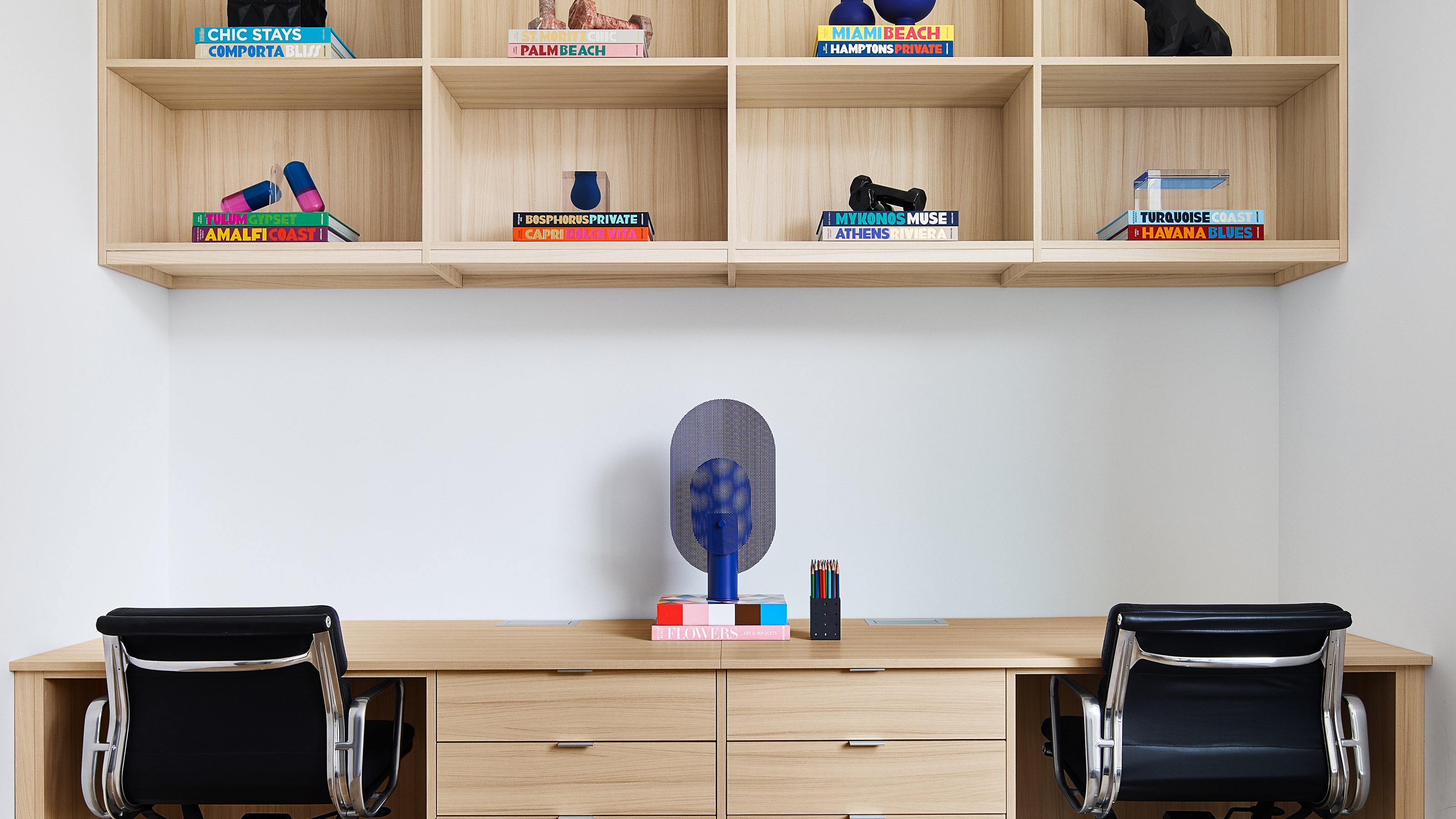
- 1. Use Floor to Ceiling Storage
- 2. Use Drawer Organizers
- 3. Hide Wires and Cords
- 4. Opt for Open Shelving
- 5. Carefully Select Your Art and Decor Pieces
- 6. Start an Effective Filing System
- 7. Use Custom Furniture Piece
- 8. Choose the Right Office Cabinet
- 9. Incorporate Storage Baskets
- 10. Have a Decluttering Routine in Place
- FAQs

Whether you work from home, full-time or part-time, home office organization ideas should be a top priority. The office is a space that often becomes a magnet for paper, stationery, and unwanted clutter. Without the right organization, it can quickly become a less-than-ideal place to work.
If that sounds like your home office, it may be time to learn some simple tips on how to organize it for a clean and tidy work area. This doesn't always mean a complete overhaul. Making small improvements can make a big difference, and that could mean adding a bulletin board and desk organizers — or replacing the desk with one more complementary to its surroundings.
If bettering your home office environment is your current priority, we have you covered. Here is everything you need to know about organizing a home office.
1. Use Floor to Ceiling Storage
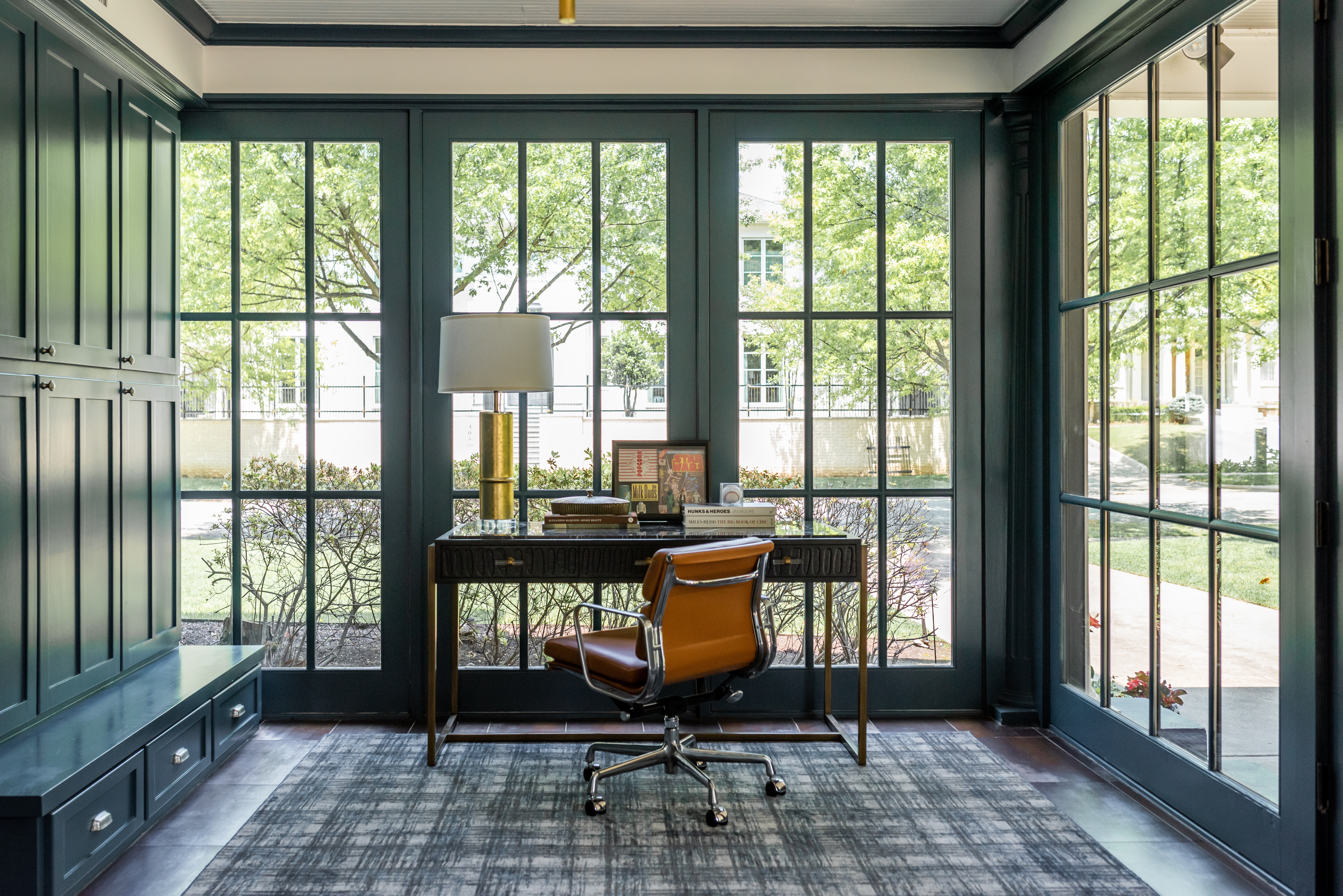
Built-in storage that stretches from floor to ceiling can make your modern home office feel neat and tidy.
Some built-in pieces can look quite bulky. If you notice yours looks a little out of place, try painting them the same color as the walls. This will allow the unit to blend into its surroundings.
"My first tip for a gorgeous and functional desk is creating hidden storage to minimize clutter," says interior designer Mel Bean. "Whether in the form of built-in cabinetry or a beautiful credenza, this organization is key. I love to add a gorgeous lamp and tray to help corral small but necessary items."
"Keep the room tidy, and utilize floor-to-ceiling storage for important documents and necessary tools," says Rachael Stollar, partner at architecture and design firm, Studio SFW. "But be careful. Don't let things pile up in your storage cabinet in an out-of-sight, out-of-mind way."
2. Use Drawer Organizers
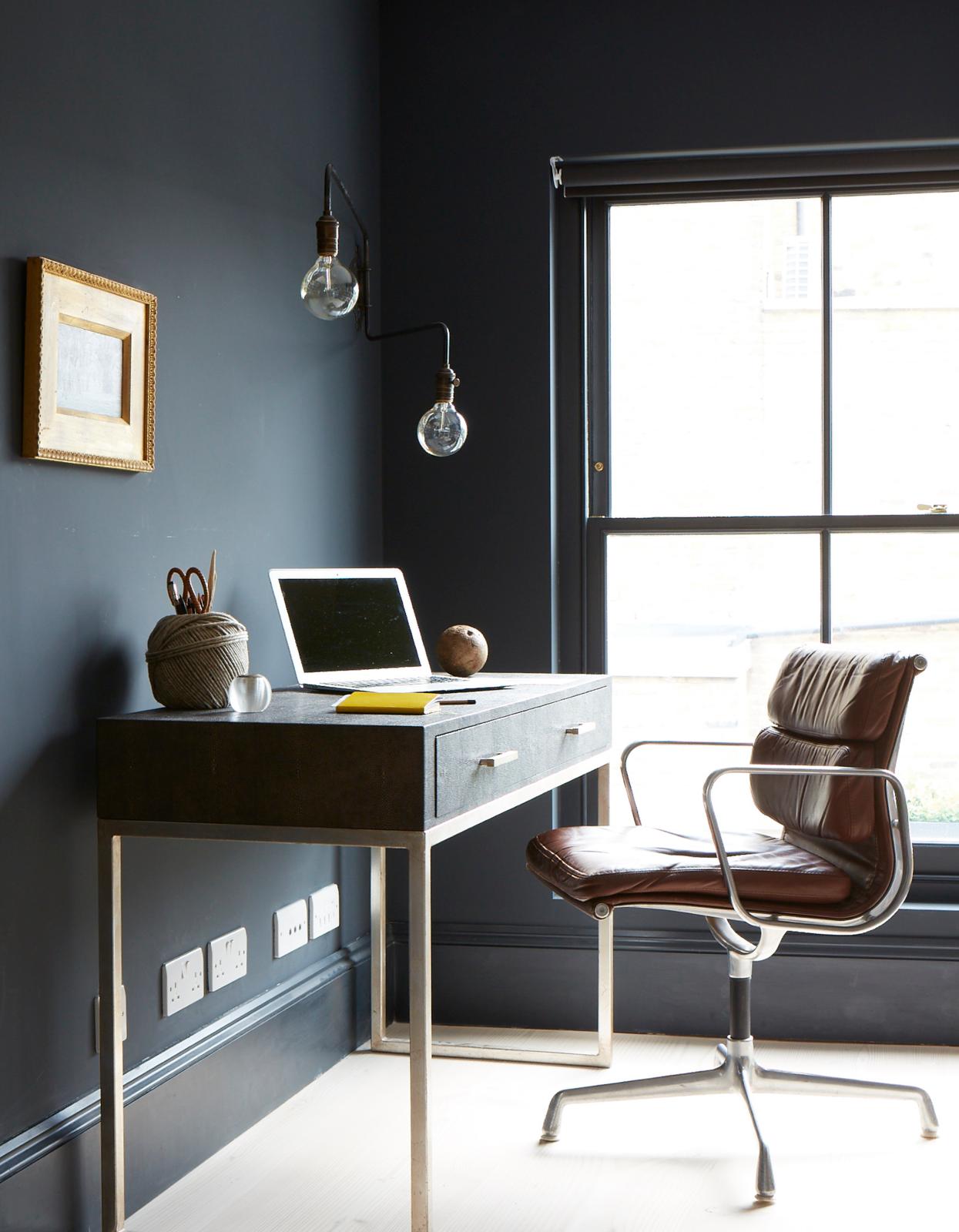
Drawers rank high in home office organizers. But if you don't pay attention, things could very quickly go out of hand as drawers hold those tidbits that help us work effectively. Be it pens, pencils, staplers, batteries, or notepads, seeing all the miscellaneous things mixing up inside can give anyone anxiety.
Start by categorizing and grouping the things you have. All the stationery goes in one category, the writing pads and sticky notes in another, and so on. Then, go for plastic organizers that usually fit within any size and shape of drawers and place all the items inside them.
Make it a habit of checking your drawers every six months to discard or replace items that are used or expired. Don't overstuff them — it can be frustrating to have a drawer that doesn’t open or close properly. If you have toddlers or small children at home, add a lock to the drawer so its contents are always away from reach.
"A well-maintained drawer with the use of organizers can neatly house all your office essentials," says Shoshanna Shapiro, founder of Sho and Co. "If you do not have desk drawers, invest in nice stacking boxes that will display well on the desktop to house your everyday office essentials."
3. Hide Wires and Cords
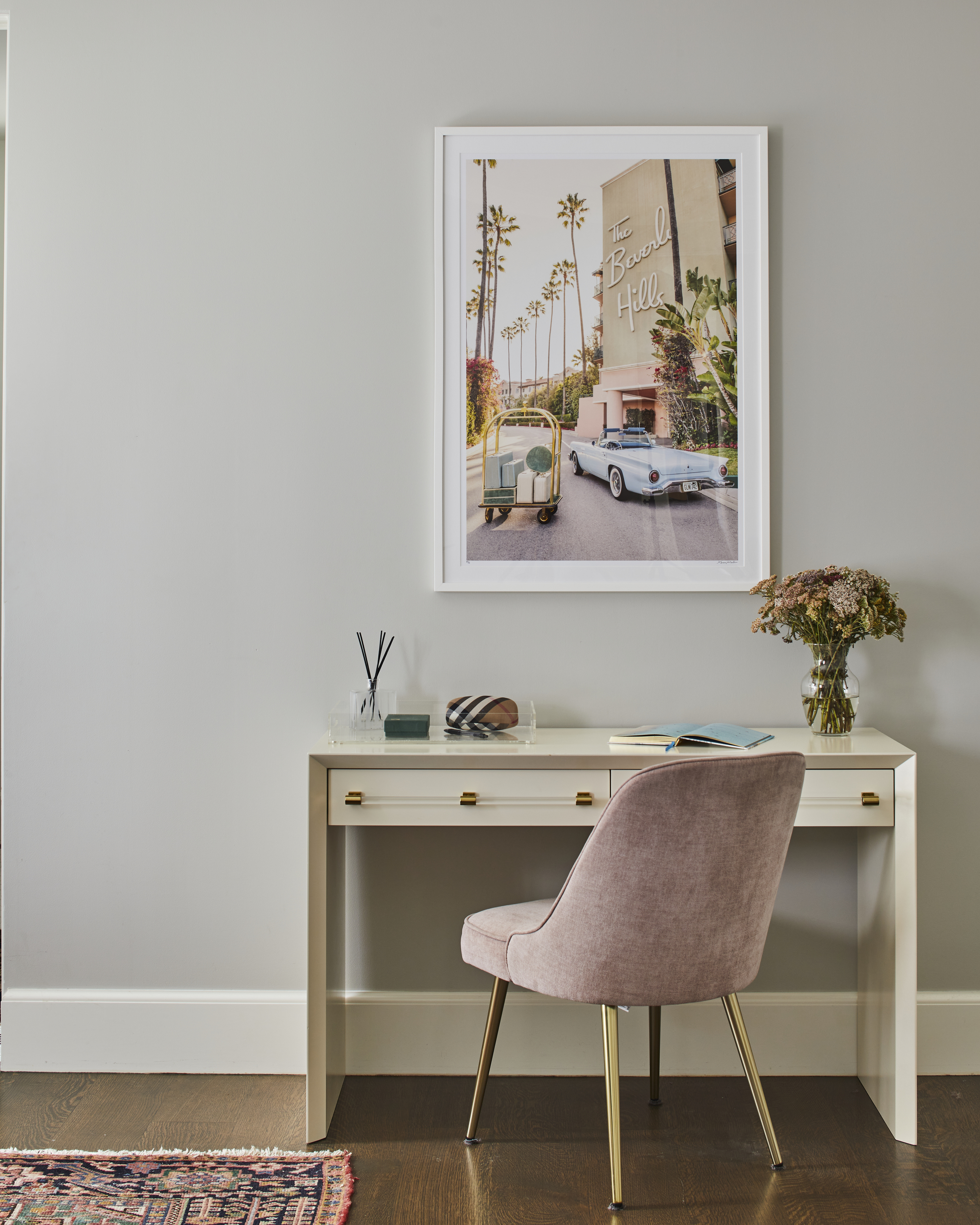
"Do your best to hide your cords if you have a lot of monitors and gadgets to deal with," says Shoshanna. "You can drill holes in your desktop and place grommets to feed the wires through. Strap the cords to the top and feed them through to the outlet area (preferably a floor outlet if floating a desk)."
"Opt for a clear desk with lots of sockets. Each work station needs at least six (a monitor, phone charger, PC/laptop, desk lamp, printer, etc) so if you can, design them into your scheme from the early stages rather than relying on extension cables," says Ann Marie Cousins, founder of AMC Design.
In a small home office especially, wires and cables can make the room look tinier and chaotic. If you have multiple screens, the chances are you have longer cables and wires. Shorten them by holding them in place using zip ties or reusable cable ties. Even Velcro cable ties can be useful in keeping them tucked away. Another way is with cable sleeves.
Many of these come with zippers so you can keep your wires organized and protected from damage. In the case of a power strip on your desk, a cable box can do wonders to keep it hidden. If sleeves and ties aren't your thing, consider laying the wires on the floor, and covering them with a colorful rug.
Want to eliminate unsightly cables from your home office altogether? Invest in rechargeable Bluetooth- or WiFi-networked electronics or a wireless charging desk. Working wirelessly will make your office look less cluttered and more streamlined.
4. Opt for Open Shelving
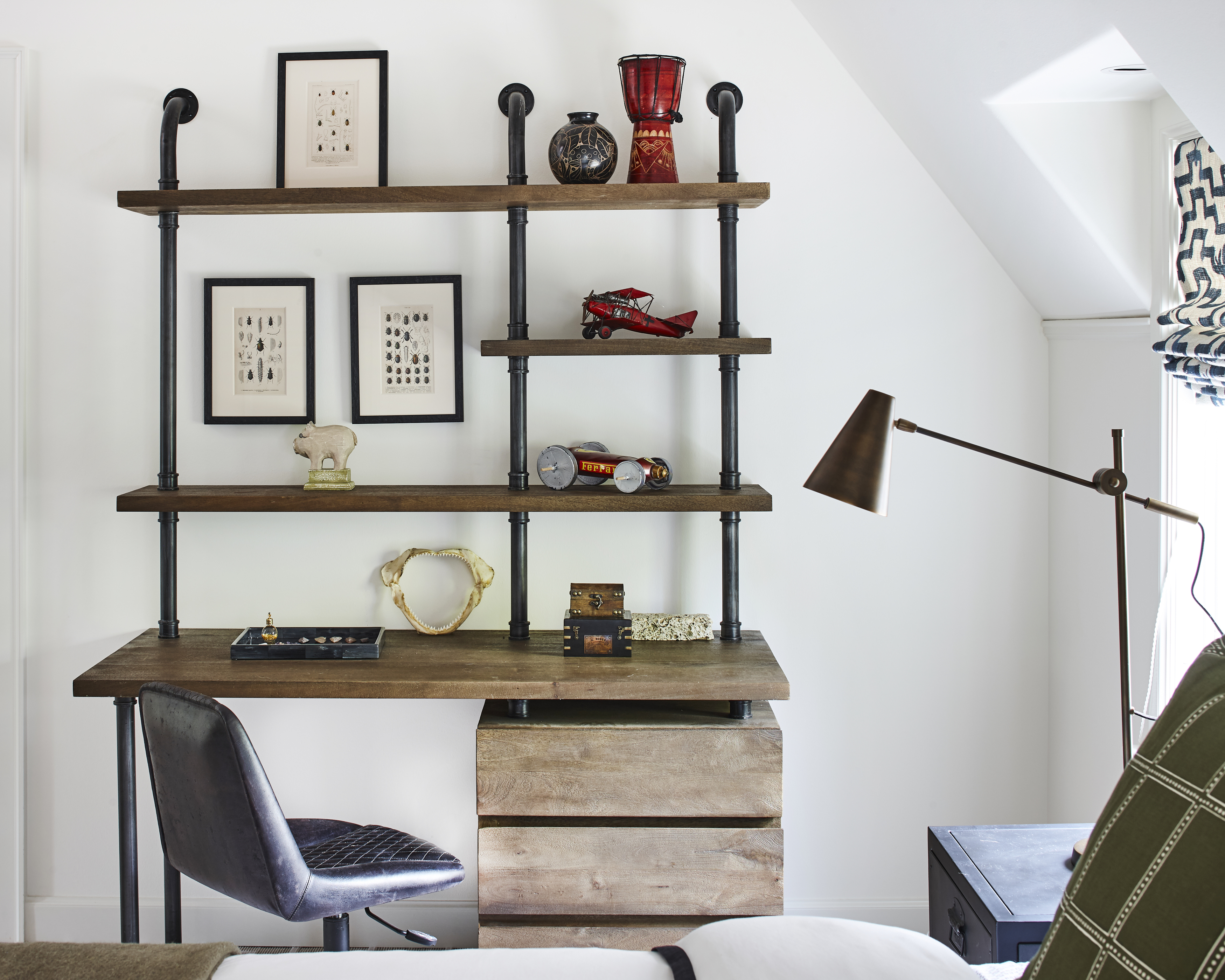
Objectively, open shelves can be both a boon and a bane, depending on how you look at them. In an apartment office, these not only provide storage but can double as an aesthetic addition that can also be used as a striking and fun display. The shelves can hold office files, plants, vases, and more, making the display look gorgeous and systemized. But take your eyes or attention off it, and the space can look cluttered and disheveled very quickly, making the entire room seem haphazard. Think twice before going for open shelves.
An important reason to choose open shelving is for its core purpose. If you spend most of your time on the laptop and need just a shelf space for a few additional accessories and gadgets, then floating shelves will work just fine. An avid crafter, artist, or architect will need a lot more in terms of both storage and shelving.
The other use of open shelves is in a shared space. In a bedroom or living room, where furniture, storage, and accessories are already aplenty, adding more cabinets or units can make the space seem smaller and cluttered. An easy, floating shelf just above the work desk can provide functionality without overloading the room.
"It’s all about having a place for everything," says Lance Thomas, founder of Thomas Guy Interiors. "Open shelves or cubbies, and desk organizers can make your desk look aesthetically pleasing. This will also keep the space clear and you will have more room to work."
5. Carefully Select Your Art and Decor Pieces
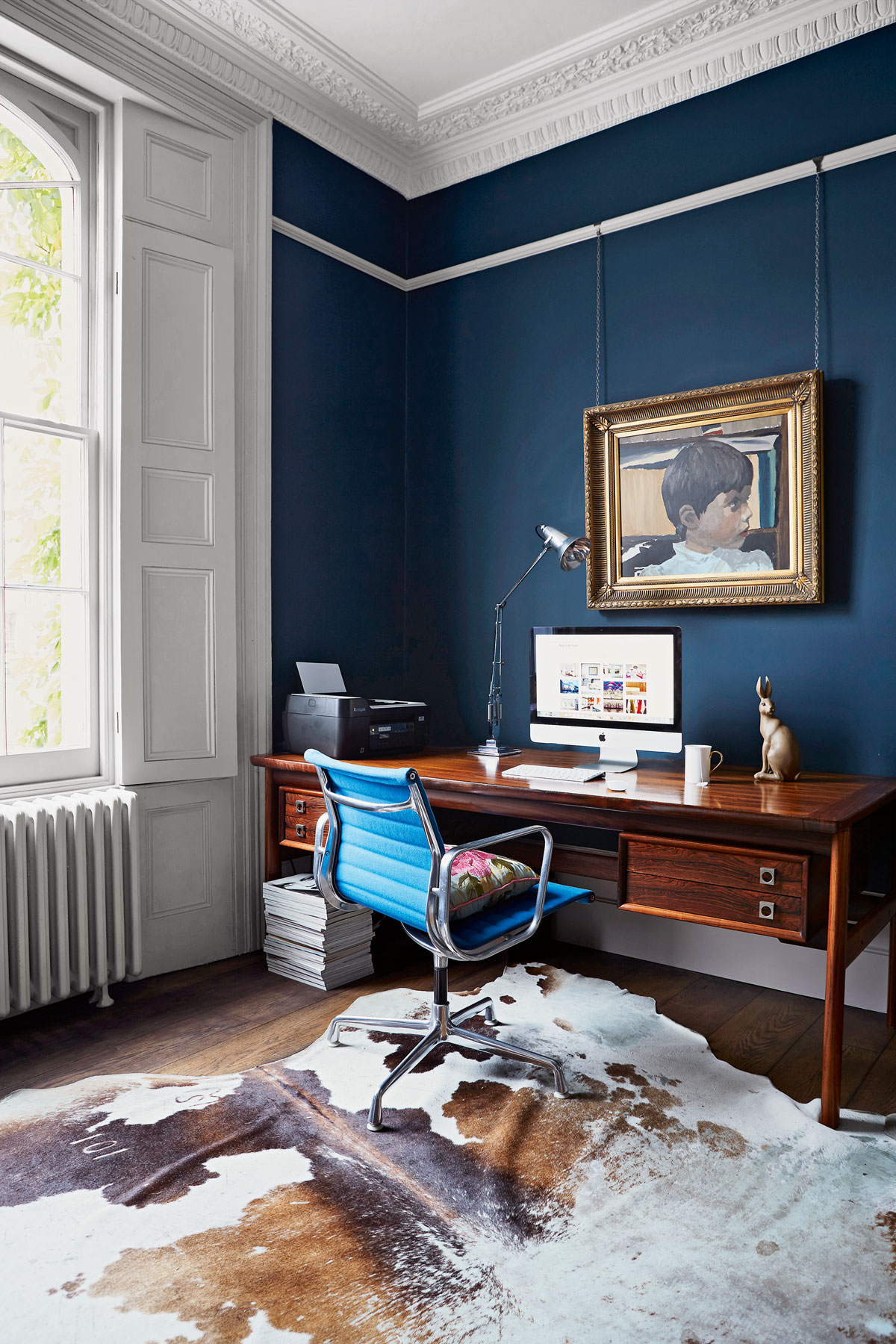
Think about how much clutter you can see when you're sitting at your desk, too, whether it's the type of storage you have in front of you or your home office wall decor. "Be intentional about the objects and art that you select that are within your sightlines – a few simple pieces that make you happy or remind you of your purpose," says Rachael Stollar.
Don't face a blank wall, however. "If your desk is facing a wall, hang an inspiring piece of art so the wall doesn't feel like a hard stop," says Shoshanna. "Your eye will continue as if you had a window or some element beyond and provides the illusion of being more open."
"Don't use picture frames as they can start to look cluttered, especially if you are floating your desk in your space," she adds.
6. Start an Effective Filing System
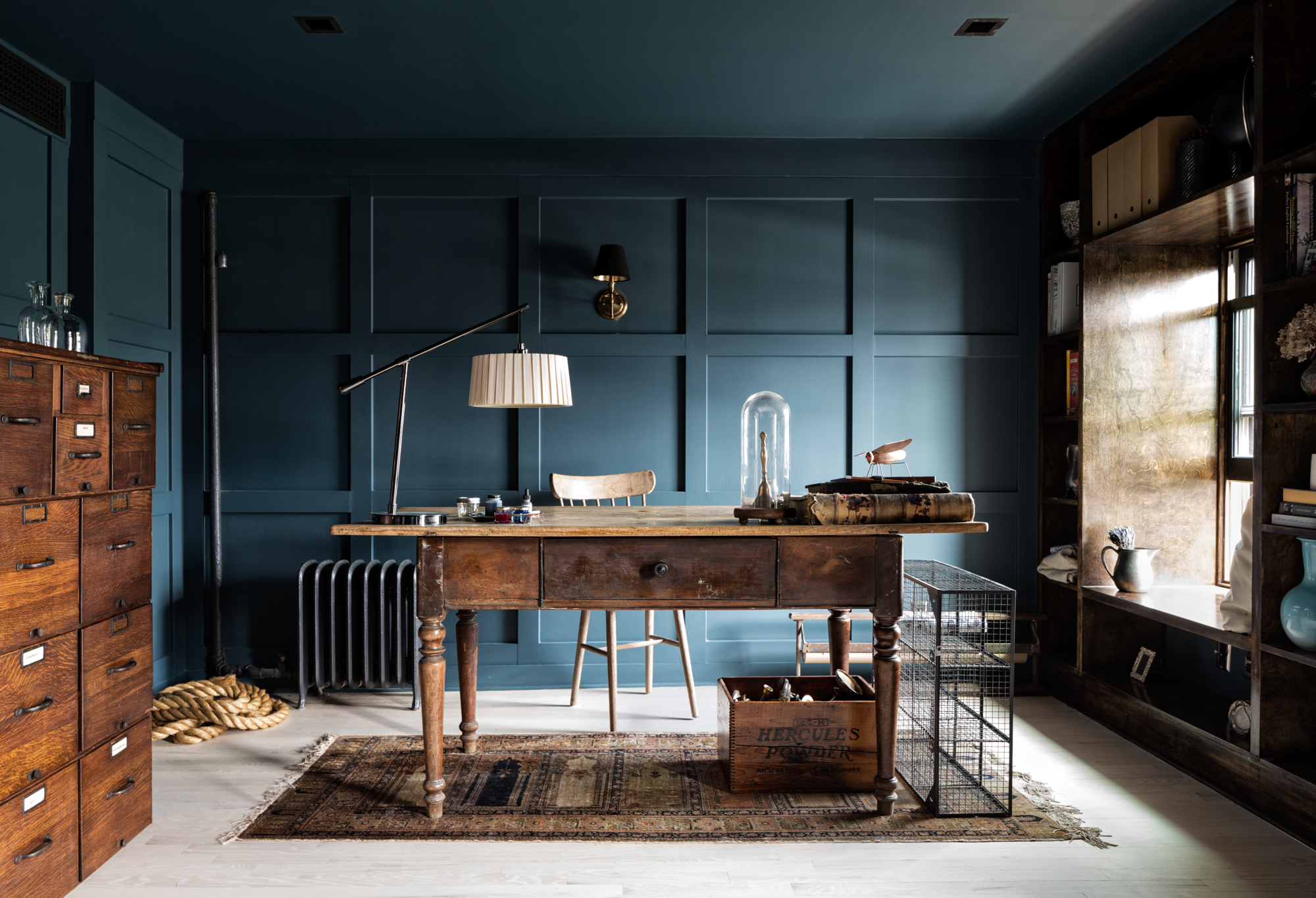
Filing cabinets are perhaps as important an addition to a chaotic home office as choosing the right desk ideas, especially if the space is used by professionals. Ideally, a standard two-drawer letter-size file cabinet that is 15 in. in width, 30" in height, and 29" in depth is ideal.
Lateral file cabinets are ideally 30" in width and 18" in height. Do a little research to see which one would be ideal for your home office since these can be large relative to the space you have. A quick way to find out which one would suit your needs is to look them up online.
"Create a filing system with cabinets," says Charlotte Sitton, founder of Organised by Charlotte. "We don't always have time to file things straight away, so have an in-tray where you can put paperwork and file it away when there's time. Add drawer inserts to keep those small stationery pieces, stamps, wires, etc."
7. Use Custom Furniture Piece

Desk chairs come in a great variety of styles, shapes, and sizes. However, the ideal ones are those that are available in the same footprint as the space. If you know your home office size, you could consider getting a desk and chair customized for the space. Made-to-measure furniture will not only ensure that every inch of the space is utilized perfectly but will also give the room a neat look.
Ideally, chairs need a footprint of about 40" square and a love seat of about 40" deep and 62" length. Make sure you allow circulation area; eke out paths at least 14 in. wide.
"Selecting the right furniture is essential for a functional home office, so source pieces that are both functional and beautifully designed," says Rob Ellis of Dwell. "Combine quality furniture with eye-catching accessories that complement the interior design style of the room. An environment you find aesthetically pleasing will alleviate stress, allowing you to feel more relaxed and be most productive."
8. Choose the Right Office Cabinet

A one-unit-fits-all solution could perhaps be the best option if you're looking to create a closet home office by fitting a home office into a tight space.
These units, equipped with a desk, storage, drawers, and more, will ensure that all the work clutter is concentrated in one space without spilling out to other areas.
If you're an artist or an architect, you could even choose a modular drafting table (although it's not as common anymore) for working and storing. Choose the ones with the most adjustable tilt, which is 36" above the floor. Pick a chair with a coordinating height required for this arrangement.
9. Incorporate Storage Baskets
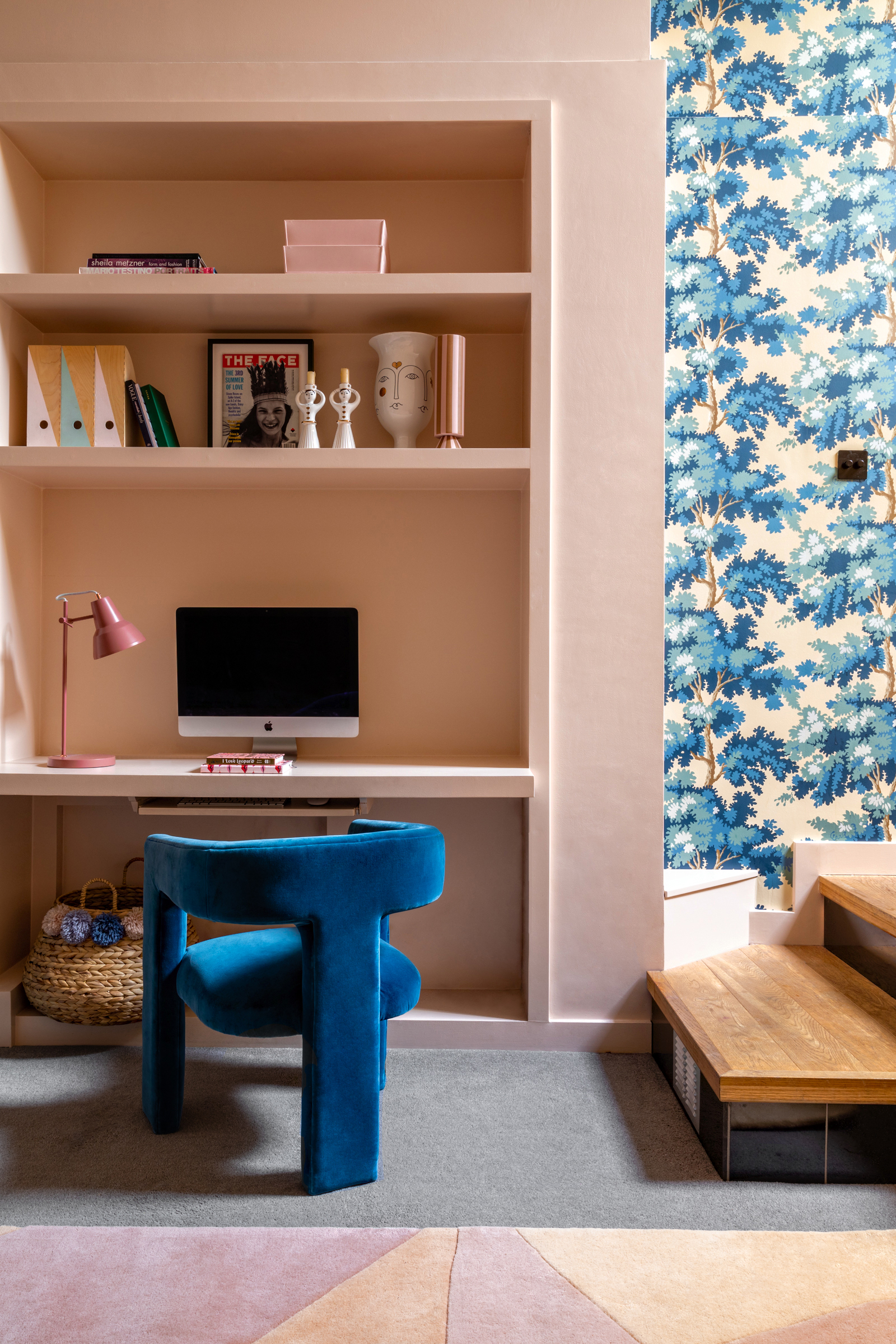
Storage baskets are multi-use and can be placed in any room, corner, or table. Plus, they look whimsical and add a little decor dose to the space.
To curb all the mounting paperwork, documents, stationery, and magazines, go for baskets if you do not want to add more storage units.
Add handy labels for easy access, like this Phomemo D30 Label Maker Machine from Amazon. Go for vibrant colors and quality materials to suit your office and personal taste.
10. Have a Decluttering Routine in Place
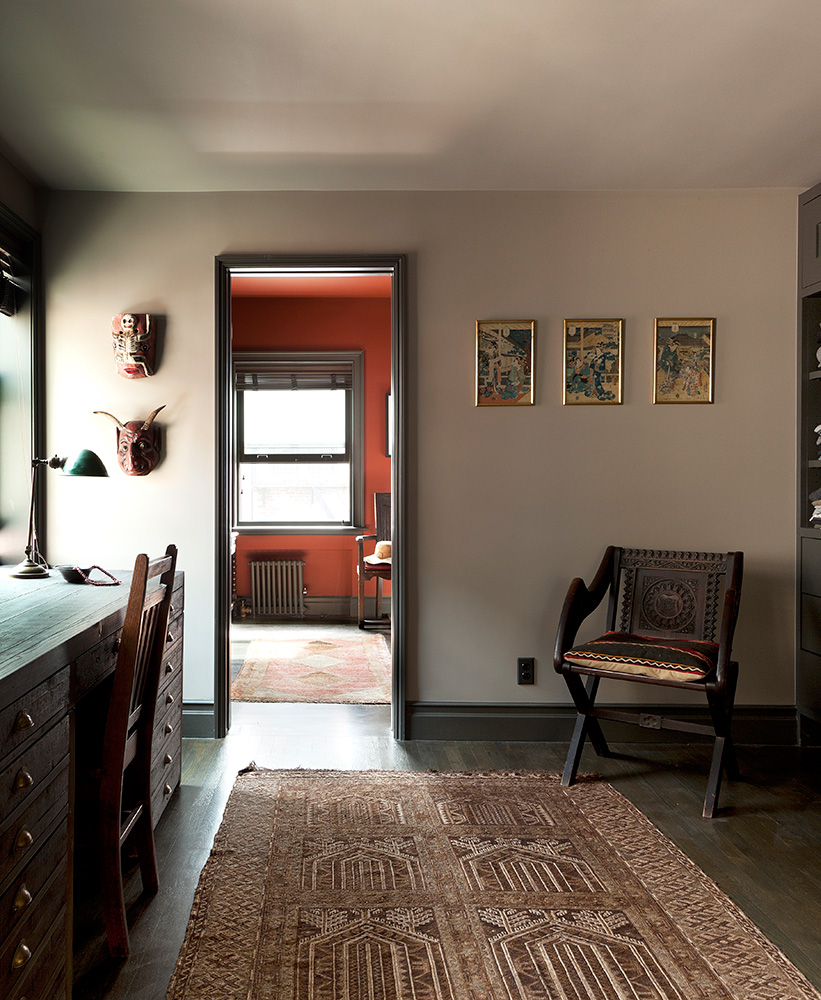
Knowing how to declutter room by room is a must. Clutter often accumulates because we think we will deal with the mess later. Days turn to weeks, and you end up with a room full of chaos. Make it a routine to sort, allocate, and organize this room.
Once a month, work your way through your home office, pulling every loose paper out of drawers, shelves, cupboards, etc. Sort them into categories as best you can, and simply shred all the useless papers. If the number of items in this space is increasing (with increasing work), bring in plastic containers to keep all the extra titbits. The advantage is that these storage units can be moved anywhere in the room or the home, allowing them to be out of sight when not in use.
Set aside anything that does not belong in your home office and make a point of returning it to where it belongs (or to whom it belongs). Donate what's overused or does not serve a purpose. Make this a one-of-a-kind space with effective furniture and storage ideas, and banish the clutter regularly.
FAQs
How do I organize a home office for maximum productivity?

To begin with, minimize your office supplies to reduce visual clutter. Keep only what's needed and make it a practice to relook at all your office supplies every month. Purge your space monthly to ensure it doesn't accumulate too much rubbish.
Divide your drawers into multiple slots for keeping post-it notes, business cards, paperclips, batteries, pen drives, and more. Add cabinets and baskets in case you need more storage space. And while you are cleaning out your desk, remember to clear your desktop too. Spend at least 10 minutes a day sorting the accumulated computer files, cleaning up cookies and bookmarks, and emptying your trash.
Tangled wires can cause distraction and make the office look cluttered. Solve this issue by bundling the wires in cable covers, or grouping them with binder clips. The cleanest solution would be to go wireless and choose a desk that has fitted plug points.
Last, of all, remember to strike a work-life balance by personalizing your desk. Family photos, vacation mementos, a plant, or even a coffee mug can brighten up your space, and make you feel relaxed. Use personalized door hangers that gently claim your special zone, and let others know not to disturb you.
Be The First To Know
The Livingetc newsletters are your inside source for what’s shaping interiors now - and what’s next. Discover trend forecasts, smart style ideas, and curated shopping inspiration that brings design to life. Subscribe today and stay ahead of the curve.

Aditi Sharma Maheshwari started her career at The Address (The Times of India), a tabloid on interiors and art. She wrote profiles of Indian artists, designers, and architects, and covered inspiring houses and commercial properties. After four years, she moved to ELLE DECOR as a senior features writer, where she contributed to the magazine and website, and also worked alongside the events team on India Design ID — the brand’s 10-day, annual design show. She wrote across topics: from designer interviews, and house tours, to new product launches, shopping pages, and reviews. After three years, she was hired as the senior editor at Houzz. The website content focused on practical advice on decorating the home and making design feel more approachable. She created fresh series on budget buys, design hacks, and DIYs, all backed with expert advice. Equipped with sizable knowledge of the industry and with a good network, she moved to Architectural Digest (Conde Nast) as the digital editor. The publication's focus was on high-end design, and her content highlighted A-listers, starchitects, and high-concept products, all customized for an audience that loves and invests in luxury. After a two-year stint, she moved to the UK and was hired at Livingetc as a design editor. She now freelances for a variety of interiors publications.
-
 5 Bathroom Layouts That Look Dated in 2025 — Plus the Alternatives Designers Use Instead for a More Contemporary Space
5 Bathroom Layouts That Look Dated in 2025 — Plus the Alternatives Designers Use Instead for a More Contemporary SpaceFor a bathroom that feels in line with the times, avoid these layouts and be more intentional with the placement and positioning of your features and fixtures
By Lilith Hudson Published
-
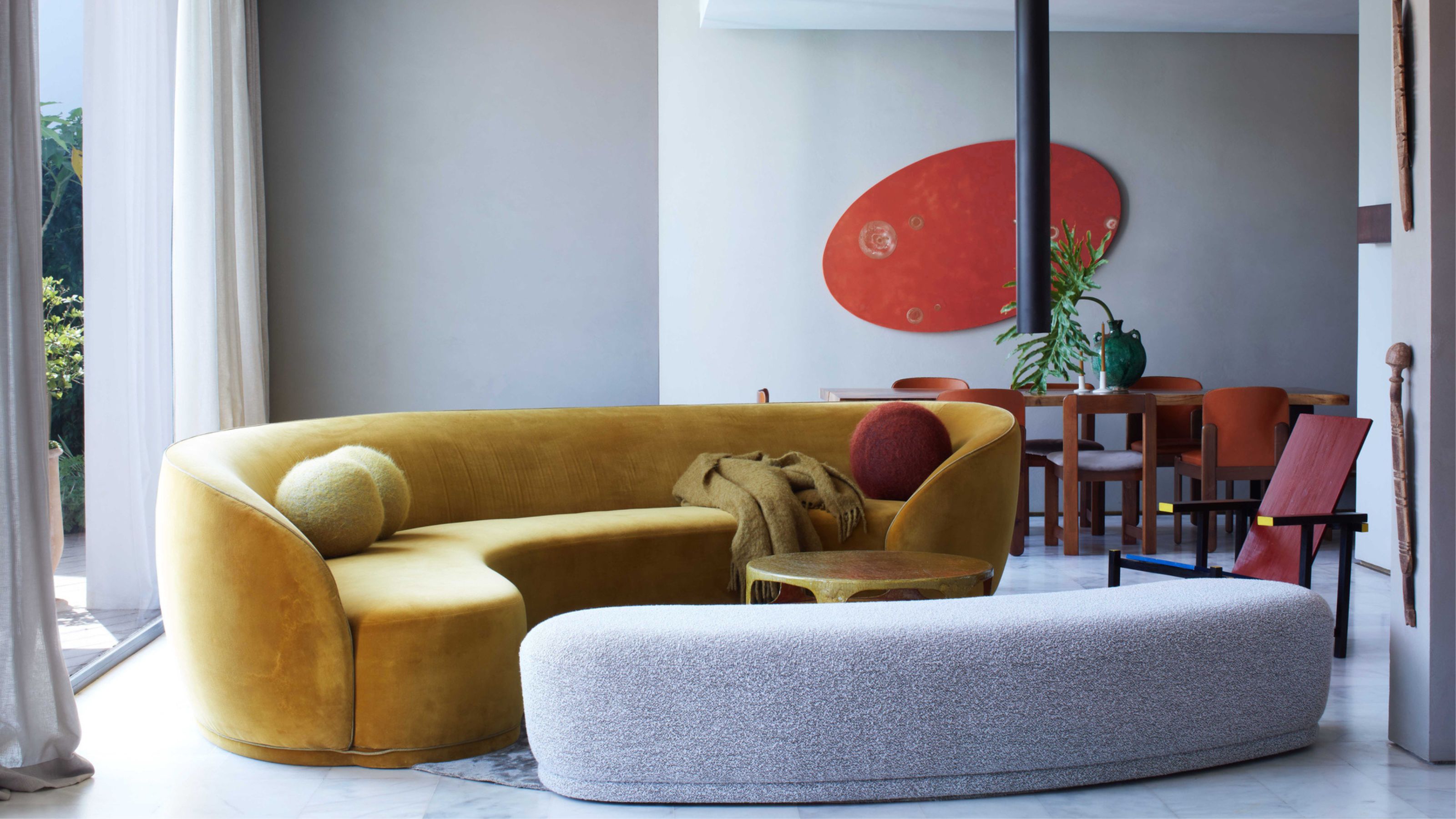 Why Decorating With Mustard Yellow Helps Fill Your Interiors With a Sense of "Confident Calm"
Why Decorating With Mustard Yellow Helps Fill Your Interiors With a Sense of "Confident Calm"There is so much more to decorating with this turmeric-tinted sauce-wiggled-on-a-hotdog not-quite-yellow shade than meets the eye
By Amy Moorea Wong Published